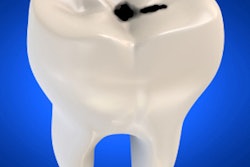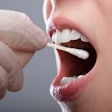
Dentists are more likely to encounter victims of domestic abuse in their practices during the COVID-19 pandemic, according to an article published on October 4 in BDJ In Practice. To be ready to help, dentists should recognize the lesser-known signs of abuse, encourage disclosure, and know how to respond in a sensitive manner.
"As dental students and into our careers, we will encounter victims of domestic abuse," author Georgia Halkett of the University of Dundee in the U.K. wrote in the article. "It is within our duty of care to our patients to be educated on the reality of domestic abuse and support those experiencing it where we can."
Gender-based violence is a major public health issue, and the statistics are sobering. According to the World Health Organization, 30% of women have been subjected to physical and/or sexual violence, and as many as 38% of all murders of women are committed by intimate partners.
Domestic abuse can include physical, sexual, mental, and emotional abuse and does not always have clinically obvious signs. In addition to physical evidence, Halkett encouraged dentists to be on the lookout for less obvious signs that may indicate domestic abuse, including the following:
- A partner who insists on being present
- A patient who misses appointments
- A delay in the time between treatment and trauma
- A patient who is withdrawn and hesitant to answer questions
- A patient who provides an explanation for the trauma that doesn't match the clinical presentation
What dentists can do about abuse
Ask patients about their situation and then support them by documenting their experiences, Halkett said. If domestic abuse is suspected, the dentist should try to elicit disclosure, a delicate process that requires courage by the victim.
"Many people will disclose this information only once, so it is imperative that we respond in a way that is validating, supportive and non-judgmental," Halkett wrote.
To elicit disclosure, create an office environment that supports disclosure and ask questions in a sensitive manner, she said. Be specific: Don't ask patients whether they are being abused, ask whether they have experienced specific acts of violence over a defined period.
If abuse is disclosed, the next step is to respond in a caring manner. Show empathy and ask what they need, Halkett wrote.
Finally, show support. Assess the patient's risk, enhance the patient's safety, provide information, and help connect the patient to support services, Halkett advised.
Documenting abuse
Victims of domestic abuse often do not leave the perpetrator for a range of complex reasons, and it is not the dentist's responsibility to persuade them to do so, Halkett wrote. Instead, she recommends carefully documenting the abuse. This will help victims feel supported, and the documentation may help them in future legal proceedings.
Halkett recommended documenting the following information:
- The type of abuse and any injuries and symptoms
- Details of the disclosure as an allegation -- not fact
- What the victim says
- Missed appointments or telephone calls
- Risk assessment outcomes, detailing any concerns, including those relating to children
- Action taken (e.g., any agencies that have been notified)
Staying vigilant during the 'shadow' pandemic
The stay-at-home orders imposed in 2020 to limit the spread of COVID-19 have forced women globally to stay home with their potential abusers, causing an increase in domestic abuse that the United Nations has described as a "shadow pandemic." In the U.S., the National Commission on COVID-19 and Criminal Justice reported an 8.1% increase in requests for domestic abuse services after lockdown orders.
"As a part of the dental profession, we are very aware of the aftermath of coronavirus and the changes it has brought," Halkett wrote. "Domestic abuse has increased and so have the chances of us seeing a patient experiencing it."



















